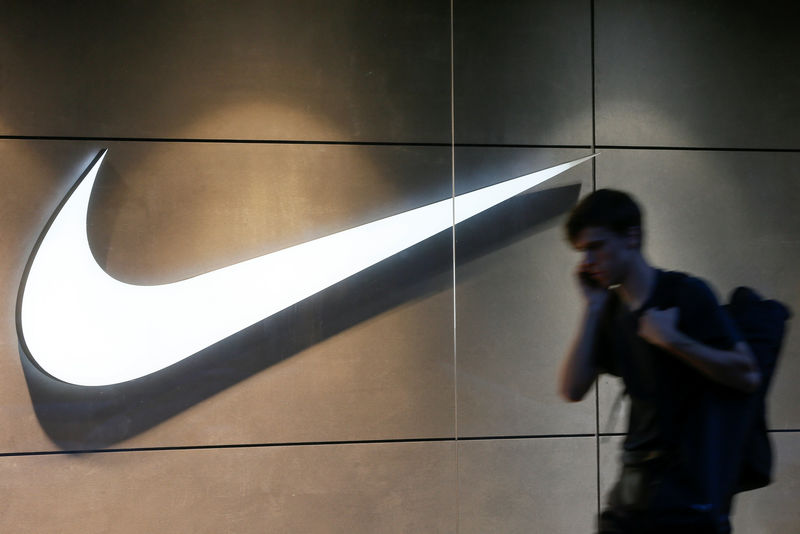© Reuters.
On Thursday, the U.S. equity markets continued their rebound from a challenging 2022, with the rising by 4.4% after experiencing an 8.8% drop in the previous year. However, not all stocks have participated in this recovery. Among this year’s worst-performing stocks in the Dow are Walgreens Boots Alliance (NASDAQ:NASDAQ:), Nike (NYSE:NYSE:), and 3M (NYSE:MMM), which have lost about 43%, 22%, and 19% respectively since the start of 2023.
Walgreens has been grappling with issues that extend beyond this year. The company’s shares are currently trading at a quarter of their value in 2015. Despite efforts to expand into the broader healthcare sector, Walgreens’ profitability has not improved significantly. In its third fiscal quarter ending May 31, the company’s operating loss expanded from $320 million to $477 million. As a result, management reduced its fiscal-year guidance on adjusted earnings per share (EPS) to $4 to $4.05, down from $4.45 to $4.65.
Nike, renowned for its footwear and apparel, is facing challenges due to increased costs that have been difficult to pass onto consumers. Despite an 8% rise in fiscal fourth-quarter revenue after adjusting for currency exchange fluctuations, Nike’s gross margin dipped by 1.4 percentage points to 43.6%. This decline was attributed to increased costs and markdowns, which resulted in a 27% reduction in diluted EPS for the quarter ending May 31.
Meanwhile, industrial conglomerate 3M has delivered disappointing results. Adjusted sales for the company fell by 4.7% in the second quarter, and management has warned of slower growth next year. Although the company plans to spin off its healthcare unit, which had flat sales in the latest quarter, 3M will become more dependent on cyclical businesses.
Despite the challenging market conditions, these companies continue to offer dividends to their investors. Walgreens’ 8.6% dividend yield might seem attractive, but the company’s negative free cash flow of $414 million for the first nine months of the year raises questions about its sustainability. On the other hand, Nike has consistently raised dividends for 21 straight years, and 3M offers a 6.2% dividend yield, having increased its payment annually for over 60 years.
These underperforming stocks have prompted questions about whether they represent a buying opportunity or a signal to stay away. While the broader market’s positive performance makes these losses stand out, it is essential to consider each company’s fundamentals before making an investment decision.
This article was generated with the support of AI and reviewed by an editor. For more information see our T&C.


